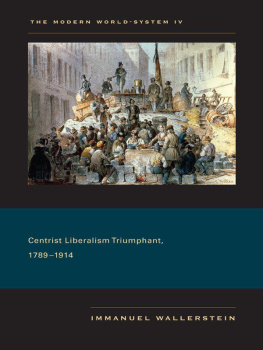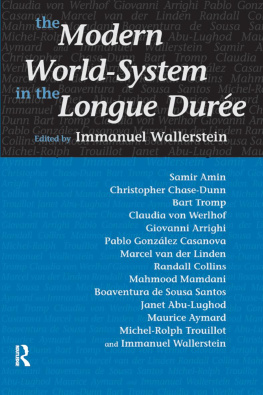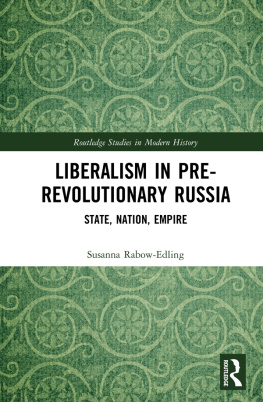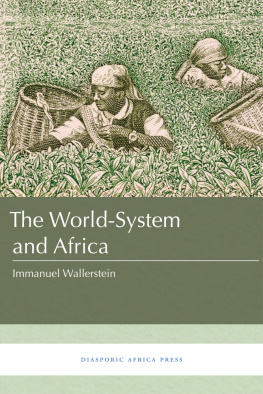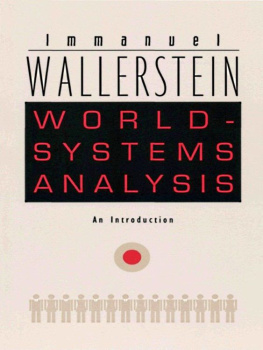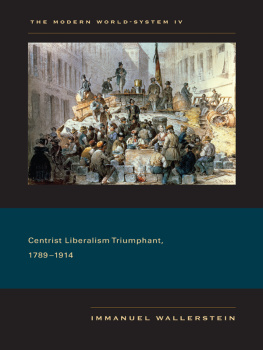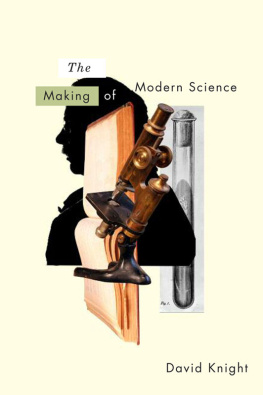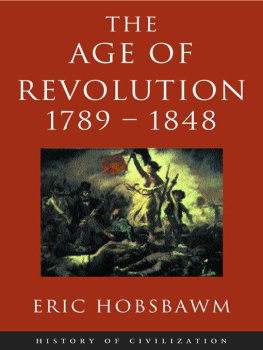Underwood and Underwood, Mrs. Pankhurst Arrested. Mrs. Emmeline Pankhurst was a leader of the British suffragettes. Although much criticized at the time for her militant tactics, she is now credited with a major role in obtaining female suffrage in Great Britain. The photograph was taken on June 2, 1914, when Pankhurst was en route to presenting a petition to Parliament. It was published by the New York World-Telegram & Sun. (Courtesy of Prints and Photographs Division, U.S. Library of Congress)
The Modern
World-System IV
Centrist Liberalism Triumphant, 17891914
Immanuel Wallerstein

The publisher gratefully acknowledges the generous support of the General
Endowment Fund of the University of California Press Foundation.
University of California Press, one of the most distinguished university presses in the United States, enriches lives around the world by advancing scholarship in the humanities, social sciences, and natural sciences. Its activities are supported by the UC Press Foundation and by philanthropic contributions from individuals and institutions. For more information, visit www.ucpress.edu.
University of California Press
Berkeley and Los Angeles, California
University of California Press, Ltd.
London, England
2011 by The Regents of the University of California
Library of Congress Cataloging-in-Publication Data
Wallerstein, Immanuel Maurice, 1930.
Centrist liberalism triumphant, 1789/1914 / Immanuel Wallerstein.
p. cm.(The modern world-system ; 4)
Includes bibliographical references and index.
ISBN 9780-52026760-2 (cloth : alk. paper)
ISBN 9780-52026761-9 (pbk. : alk. paper)
1. Liberalism. 2. Capitalism. 3. Ideology. I. Title.
HC51 .W28 1974 vol. 4
[JC574]
320.5109'034dc22 2010040366
Manufactured in the United States of America
20 19 18 17 16 15 14 13 12 11
10 9 8 7 6 5 4 3 2 1
This book is printed on 50# Enterprise, a 30% post consumer waste, recycled, de- inked fiber and processed chlorine free. It is acid-free, and meets all ANSI/NISO (z 39.48) requirements.
In memory of and homage to Giovanni Arrighi
CONTENTS
ILLUSTRATIONS
| Underwood and Underwood, Mrs. Pankhurst Arrested |
| David Wilkie/Abraham Raimbach, Village Politicians |
| Victor Delaive, Bourgeois et Ouvriers |
| Sir Thomas Lawrence, Prince Metternich |
| Lechard (?), Insurrection du Lyon, 914 avril 1834 |
| Auguste Saint-Gaudens, Robert Gould Shaw and 54th Regiment |
| Andr Dutertre, Murad Bey. In Napoleon's Description de l'Egypte/ Etat Moderne |
| Punch, To the Temple of Fame |

David Wilkie/Abraham Raimbach, Village Politicians. This painting by the Scottish genre painter David Wilkie was the hit of the Royal Academy exhibit in 1806 in London and made his reputation. Wilkie later entered into collaboration with Raimbach to make engravings of his paintings to ensure wide distribution. The first such engraving was this one, done in 1813. The importance of the work was its illustration of how political debate had become a local activity of the populace and was no longer confined to the upper strata. (Courtesy of Prints and Photographs Division, U.S. Library of Congress)
PREFACE: ON WRITING ABOUT
THE MODERN WORLD-SYSTEM
This is the fourth volume in a series whose first volume was published in 1974. The overall work was conceived as a multivolume analysis of the historical and structural development of the modern world-system. Each volume was designed to stand by itself but was also intended simultaneously to be part of the singular larger work. This poses some problems both for the author and for the reader. I think it might be useful to the reader for me to spell out how I have approached these difficulties, not all of which were apparent to me when I started out. I do this in the hope that it makes my intentions and methods more clear to the reader.
Each volume, and each chapter within a volume, has a theme and tries therefore to establish a point. The whole book is simultaneously historical/diachronic and structural/analytic/theoretical. This is in accord with my epistemological premise that the much-vaunted distinction between idiographic and nomothetic epistemologies is outdated, spurious, and harmful to sound analysis. Social reality is always and necessarily both historical (in the sense that reality inevitably changes every nanosecond) and structural (in the sense that social action is governed by constraints deriving from the historical social system within which the described activity occurs).
If, however, one tries to describe reality over a large space and a long time (say, the modern world-system as a whole from its inception in the long sixteenth century [14501640] to today and tomorrow), one encounters the elementary difficulty that one cannot do everything at once. So I decided to take the story forward more or less chronologically, introducing structural aspects of the modern world-system when they first occurred or became evident in a significant way. There seemed to me no point in discussing, in a volume largely devoted to the long sixteenth century, structural issues that became salient only in the nineteenth century.
But equally, it did not seem to be useful to discuss, in a volume largely devoted to the nineteenth century, structural issues that had already been discussed in the first volume and whose characteristics had not significantly changed in the intervening centuries. Since, however, my views on when a phenomenon such as industrialization first occurred is somewhat different from the one argued by many other analysts, readers might not locate it in the volume in which they expect to see it discussed. I have tried to make clear, as I have proceeded, the logic of my choices.
So, let me first say how I decided to handle chronology. When I wrote volume 1, I said in my introduction that I would divide the overall work into four epochs, to which I gave specific dates in that introduction. Volume 1 sought to cover the long sixteenth century, defined as running from 1450 to 1640. However, when I came to write volume 2, I saw immediately that the story I wished to tell did not start in 1640 but rather, more or less, in 1600 and ran, more or less, to 1750. I put these years in the subtitle. I had now adopted, quite deliberately, the concept of overlapping long periods, a concept I continued in volumes 3 and 4. But this meant, of course, that I could not reach the present in merely four volumes, as I had thought in 1974.
The concept of overlapping time periods turned out to be crucial for my analyses. For time boundaries are of course fairly arbitrary and can be justified only in terms of the immediate issue that one is treating. The story of Dutch hegemony in the world-economy (chapter 2 of volume 2) may be thought to have started in 1600 (or even earlier) but definitely was not over in 1640 and is not really part of the story of the long sixteenth century. It belonged in volume 2, devoted to the consolidation of the European world-economy in the seventeenth centuryagain, more or less.
Furthermore, this raises the question of when one should seek to enter structural notions into the text. There was, at least in my opinion, no hegemonic power in the sixteenth century. It would have been out of place to introduce the concept, therefore, in volume 1. The Dutch were the first hegemonic power in the modern world-system. It is also true that they were not the last. But the concept of hegemony was not discussed within the context of Great Britain's assuming that role, nor will it be in the context of the assumption by the United States of that role. The concept, as such, once discussed, was taken for granted, and reference, when appropriate, was made to it without reviewing the logic of the concept. The theoretical debate had already taken place.
Next page
